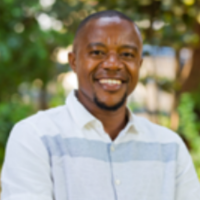Refugees experience extreme stress factors at every stage of their displacement: experiences of conflict and persecution, separation from families, xenophobia, perilous journeys, and precarity of livelihood. However, many refugees and asylum seekers demonstrate enormous strength and resilience in the face of such difficulties. It is important to honour refugees’ capacity for resilience and strength, while respecting their agency to foster a positive future by providing proper resources. Understanding and addressing mental health and psychosocial needs contribute greatly to facilitating a nourishing environment, especially because multiple studies show that refugee populations have a higher risk of PTSD (Post-Traumatic Stress Disorder) and depression than the general population.
Additionally, it is crucial to take into account that the current global circumstances, such as the pandemic, worsened the imperilled mental health of refugee populations. For example, the Dadaab Response Association released a special working paper about the pandemic’s negative impact on youth well-being in the Dadaab refugee camps, which reveals the prevalence of self-harm and suicide amongst refugee youth. In light of the ongoing challenges refugees face and the impacts of the pandemic, it is urgent to strengthen mental health and psychosocial support systems for refugees and displaced persons.
In October 2022, UNHCR’s Executive Committee adopted Conclusion No. 116 (LXXIII), which draws special attention to the mental health and psychosocial needs of refugees and forcibly displaced persons. In the press release for the ExCom Conclusion, Sajjad Malik, Director for the UNHCR Division of Resilience and Solutions stated that “The best way to improve the mental health of refugees is to find lasting solutions to the crises they are fleeing.” While the global commitment to implementing sustainable psychosocial support systems is certainly a positive step, there are still various challenges and barriers to be considered.
We reached out to LERRN partners Pascal Zigashane and Michaela Hynie to hear their thoughts on the importance and implications of this Conclusion.
Pascal Zigashane, Executive Director at Action Pour le Progrès, allocates services for children in pre-school with a focus on social and emotional issues, while also offering services to refugees from non-English speaking countries, such as English courses.
Dr. Michaela Hynie, the interim director of Center for Refugee Studies at York University, focuses on social inclusion using changes in mental and physical health outcomes as a measure of the success of our settlement programs as well as considering access to health care for people who have precarious migration status or who have experienced displacement or forced migration, as well as mental health consequences of social exclusion. The interviews below were conducted separately and have been edited for length and clarity.
Q: What do you think about the 2022 ExCom Conclusion on mental health? Does it address the full scope of the issue?
Pascal Zigashane: I think the [Conclusion] addresses many of the mental health issues that refugees face. However, the refugees are currently struggling with even worsened situations with increased prices for essential goods and lack of food security.
You find that it is becoming an unbearable situation for refugees. They escape war and conflict, and their mental health becomes even more strained with food insecurity and life conditions in the camp.
Also, humanitarian organizations, including UNHCR, may add more stress to refugees’ lives and contribute to the victimization of refugees. Let me give you an example: I personally applied for a travel document, and I did it via UNHCR because I wanted to attend a conference in Uganda back in May. The documents were not processed in time for the conference because they were not a priority.
Michaela Hynie: A strength of the conclusion is that it does talk about the need to recognize that we create conditions that result in negative mental health consequences and acknowledges that the people who are working in these environments also can experience distress. Also, it is crucial to adapt these services culturally.
Q: What are the current barriers to access health services for asylum seekers and refugees in your community or areas of focus?
PZ: Refugees are still having issues with essential needs such as food assistance. The major problems are still related to offering the fundamental needs to refugees.
A person needs to see a hopeful future.
This affects especially refugee youth because they are not seen as a priority. They lose hope for their future because they do not get resettlement or chances to go to university and generate income. This leads refugee youth to criminalization.
Refugees spend years in the camp while they wait for a decision, that is why the rejection of refugee claims can also be very dangerous for the mental health of the claimant. That person cannot access the services in the camp anymore. Their movement is limited, their access is limited.
MH: We know that the majority of people who are refugees under UNHCR definitions are not living in UNHCR-controlled areas, that they are living in urban centres. How are they accessing care there? How people access any kind of care when they are outside of a refugee camp setting? Do clinics in these countries provide services and do they provide mental health services? And are those services culturally appropriate? These are all really important questions. In public health care systems, particularly in low-income countries which is where most people who are forced migrants are residing, mental health services receive a fraction of the funding of physical health services.
I think also talking about digital equity and people’s access to affordable Internet services when providing mental health services through technology is important to consider. Most people have access to a cell phone now, but not everybody can read. So, are those services that are being offered through technology accessible to people with low reading skills? Do those services require data plans that people might not be able to afford to access? It is also important to recognize who is included or excluded from technologically enhanced or mediated mental health services, because many of those services are not appropriate for people with very serious mental health issues, such as psychosis or post-traumatic stress disorder.
Q: What are the existing response mechanisms to the mental health needs of forcibly displaced and refugees in your community?
MH: This question depends on what your status is and it depends on what the insurance programs are in the country that you have migrated to. Those barriers sometimes include stigma and it can be not knowing how to access those services. So, when we speak to people who eventually ended up using mental health services, we have found that many of them would talk about how they didn’t know how to reach care or they didn’t know how to figure out if they need those services.
Mental health services need to work with community organizations, community leaders, and community networks, because the care needs to be community specific. A one-size-fits-all solution doesn’t actually work.
Other barriers could include language barriers, the times at which services are available, and accessibility to digital services.
Q: What are some possible impacts of this Conclusion? How do you think it addresses social determinants, integration and inclusion into national health services?
PZ: The Conclusion will help humanitarian organizations to assign more budget to mental health support and psychosocial services. It will also create more jobs in this area. However, it is important to make sure everyone can access these services, not just a select few.
MH: Organizations and governments should reflect on how their policies are impacting mental health and well-being in partnership with the communities that they’re working with, because policies that are well intended can sometimes have very negative consequences. This is because the governing bodies haven’t consulted with communities about what they need. Again, there isn’t going to be one-size-fits-all within a community. We want standardized solutions because it’s easier and it’s cheaper. However, the first step in implementing mental health services needs to be partnering with the community around identifying the appropriate solution. It is also important to think very carefully about who is speaking for the community. Who is not being heard from? Often, the most vulnerable people are excluded from the conversation.
Q: What do you hope international collaboration would entail in terms of mental health and psychosocial support services to refugees?
PZ: It is good to mobilize resources internationally for mental health support. But there should be accountability for how these resources will be allocated.
MH: I feel like international always needs to be a network of local for these kinds of initiatives.
There can be international initiatives that provide support, tools, and recommendations around processes, but it always has to be taken up at a local level.
Q: What role do you see refugee-led organizations can play in advancing the Conclusion?
PZ: COVID actually made refugee-led organizations more visible. At Action Pour le Progrès, we are already taking initiatives to help children in pre-school who are affected by the distressing processes.
RLOs know what refugees go through and they are connected to their communities, which makes it easier to connect and reach the refugee leaders. Their doors are open to their community.
Q: Would you like to share any concluding remarks?
PZ: The refugee conditions are getting worse. Food and security remain the primary concerns for refugees. Mental health services are definitely needed, but counselling is not enough.
MH: Providing access to appropriate affordable and timely mental health and psychosocial support services is absolutely important.
We’re so focused on individual-level solutions rather than thinking about the upstream causes of distress. So, never lose sight of reflecting on prevention not just at an individual level, but prevention at a structural, social, and policy level.
This publication was prepared by LERRN Project Writer Irem Karabag.

